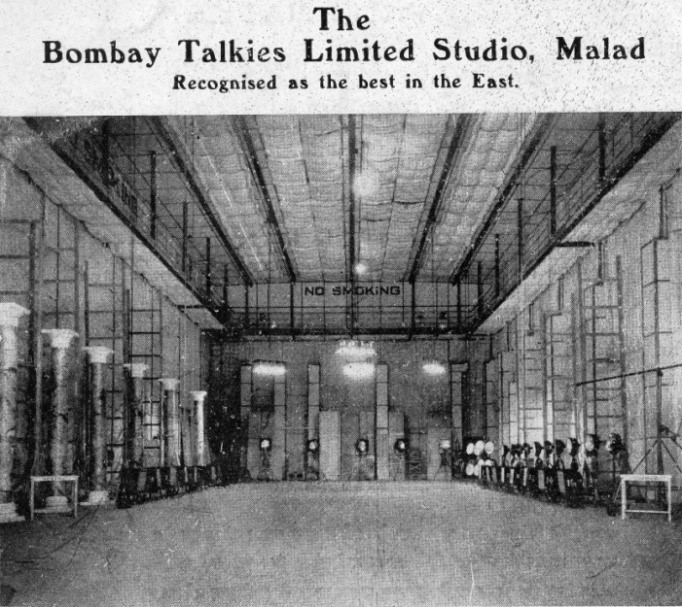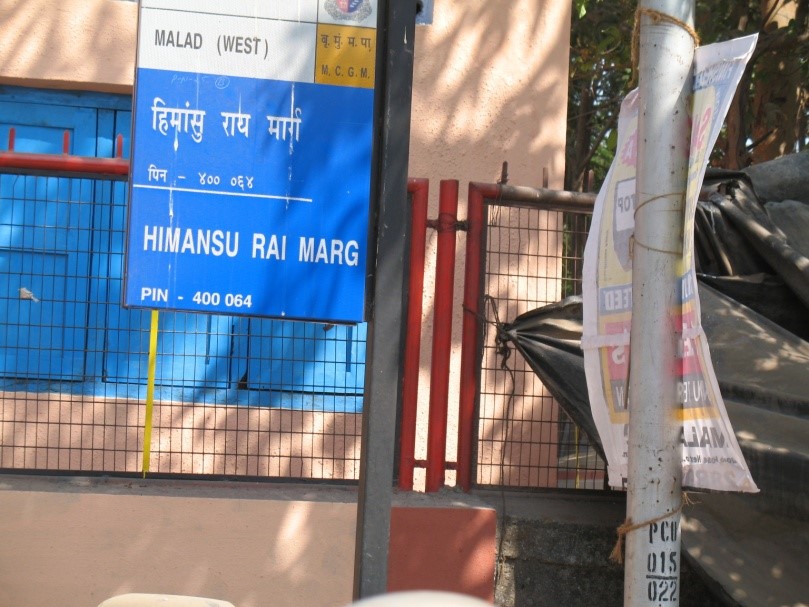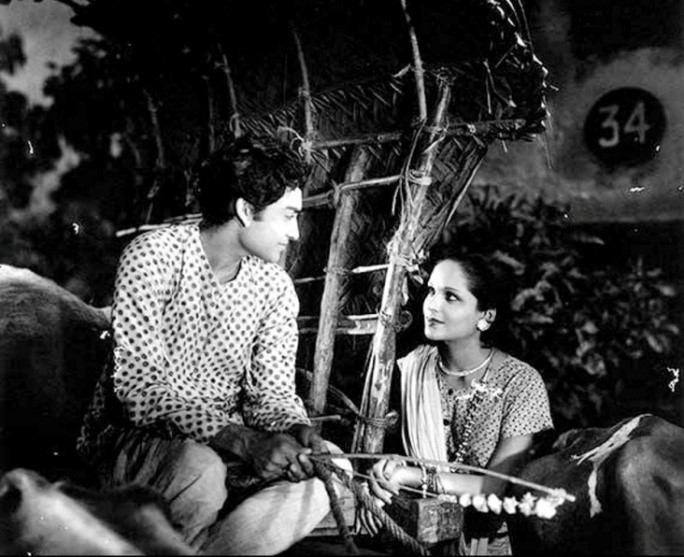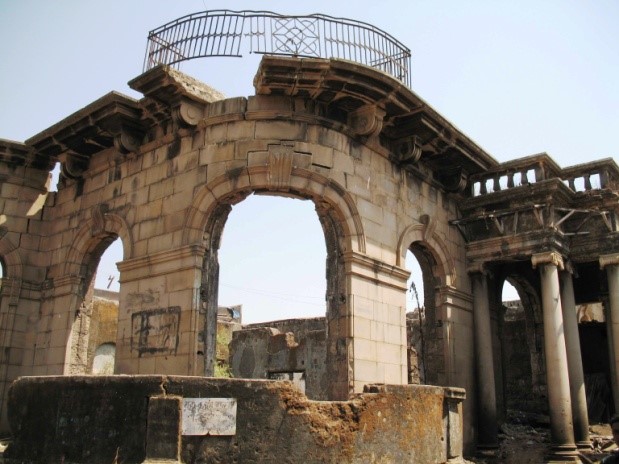Exile: Germans working in Bombay Talkies studios
When Himansu Rai (1892–1940), along with his wife Devika Rani (1908–1994), founded the sprawling Bombay Talkies studios in Bombay’s north-western suburb of Malad, it was one of the best equipped film studios in Asia. Franz Osten was one of the many Germans working and living around the studio, forming a mini-Munich in Malad. One of the studio’s Indian assistant cinematographers recalled: “When I got married in Goa, Osten, along with his wife, came to attend my wedding. There were as many as fifteen Germans who came to Goa“. (Gangar 2001a, 16)
Between 1925 and 1929, Franz Osten worked with Himansu Rai on three silent films: Prem Sanyas/The Light of Asia (1925), Shiraz (1928) and Prapancha Pash/A Throw of Dice (1929), in collaboration respectively with Great Eastern Film Corporation (Delhi), Emelka Film (Munich), British Instructional Films (London), Ufa (Potsdam) and Himansu Rai Film (Bombay). These were some of the earliest international collaborations in the history of Indian cinema. Light of Asia was the first Indo-German co-production, with the Great Eastern Film Corporation contracted to provide the funds. This corporation was founded by Sir Moti Sagar, a retired high court judge, along with his brother Prem Sagar as early as in 1924. Having successfully co-produced The Light of Asia in German with the Emelka Film Company, Himansu Rai went on to more ambitious international projects. The film’s success in Europe opened up possibilities for two more co-productions, this time with Ufa and British Instructional Films: Shiraz and A Throw of Dice. The British Instructional Films was a production company active mainly during the silent period till about 1932. Directed by Franz Osten, Shiraz employed a largely British crew. It was shot by Emil Schunemann and H. Harris. Emil Schunemann also shot A Throw of Dice. The Light of Asia, on the other hand, was shot by Josef Wirsching and Willi Kiermeier. Ufa controlled distribution.
Now working for Bombay Talkies, Osten was joined by the cinematographer Josef Wirsching, set designer Karl von Spreti and the labman Wilhelm (Willie) Zolle, with their families. From 1935 (Jawani ki Hawa), a stream of Hindi films began to emerge from Bombay Talkies, all directed by Franz Osten, shot by Josef Wirsching, sets designed by Karl von Spreti and processed by Willie Zolle. Bombay Talkies had a staff of more than four hundred artists, technicians and assistants – besides the Germans and a few British technicians, the rest of the staff was Indian. Having undergone training at Ufa, both Himansu Rai and Devika Rani insisted upon everyone following a strict and disciplined work culture at Bombay Talkies.
At Bombay Talkies, Osten’s career as film director lasted from 1935 to 1939 and during this period he directed 16 Hindi films. But, on the outbreak of the second World War, he and other Germans at Bombay Talkies were interned at Deolali (in the Nashik district in the Bombay Presidency, now the state of Maharashtra). This was in 1939, when the film Kangan (Bangle) was being shot. Other Germans were interned for the duration of the war but Osten was released and repatriated to Germany because of his old age and ill health. Back in Germany, Osten took an administrative job, first with the Bavarian Film Company in Munich, and in 1946, at the age of 70, as manager of Bad Aibling health resort near Munich. A position he held for the rest of his life. When he died there in 1956, most German newspapers carried a small obituary but, by that time, his name had almost been forgotten in Germany (Gangar 2001, 46).
Wirsching rejoined Bombay Talkies and Karl von Spreti went into politics. He was to ultimately become a member of Parliament and West Germany’s ambassador to Guatemala, where in 1970 he was kidnapped and killed by terrorists. Wirsching’s last Indian movie (India’s first colour film in Cinemascope) was Pakeezah, directed by Kamal Amrohi. It starred Meena Kumari, Raaj Kumar and Ashok Kumar, who had begun his acting career with Bombay Talkies in films directed by Franz Osten and shot by Josef Wirsching. Wirsching died when the film was still in production. The Munich-born (22 March 1903) cinematographer breathed his last in Bombay on 11 June 1967. Indian cinematographer R.D. Mathur, who had once assisted Wirsching at Bombay Talkies, completed the film. Pakeezah took sixteen years to complete (16 July 1956 to its release on 4 February 1972). The 1949 Bombay Talkies’ film Mahal is considered to be a seminal work in terms of Wirsching’s cinematography. It evokes German expressionistic nuances, including the way Wirsching lights the objects and the characters’ faces as well as the way he forms the looming shadows in this black and white film. These features show faint echoes of The Cabinet of Dr. Caligeri (1920) and can also be found in Bombay Talkies’ Osten-directed and Wirsching-shot second film Achhut Kanya (1936).
Bombay Talkies, which lasted for barely two decades, has left an indelible mark on the history of Indian cinema. Unfortunately, after Devika Rani left, the studio went into a devastating decline, its building uncared for and falling apart. In the early 1950s the Workers Industrial Cooperative made efforts to save it, but its decline continued. The studio made only one more film, Phani Majumdar’s Baadbaan in 1954, in which neither Franz Osten nor any other Germans were associated in any capacity whatsoever. However, the cultural Indian memory still cherishes those old Bombay Talkies’ films and their songs.




